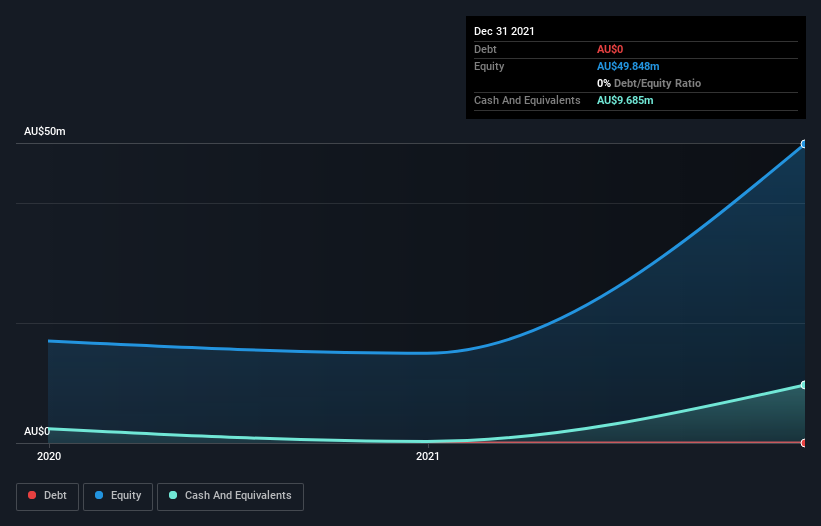- Australia
- /
- Oil and Gas
- /
- ASX:BME
We Think Black Mountain Energy (ASX:BME) Can Easily Afford To Drive Business Growth
We can readily understand why investors are attracted to unprofitable companies. For example, although Amazon.com made losses for many years after listing, if you had bought and held the shares since 1999, you would have made a fortune. But while the successes are well known, investors should not ignore the very many unprofitable companies that simply burn through all their cash and collapse.
So should Black Mountain Energy (ASX:BME) shareholders be worried about its cash burn? In this report, we will consider the company's annual negative free cash flow, henceforth referring to it as the 'cash burn'. First, we'll determine its cash runway by comparing its cash burn with its cash reserves.
Check out our latest analysis for Black Mountain Energy
When Might Black Mountain Energy Run Out Of Money?
A cash runway is defined as the length of time it would take a company to run out of money if it kept spending at its current rate of cash burn. When Black Mountain Energy last reported its balance sheet in December 2021, it had zero debt and cash worth AU$9.7m. In the last year, its cash burn was AU$1.5m. So it had a cash runway of about 6.7 years from December 2021. While this is only one measure of its cash burn situation, it certainly gives us the impression that holders have nothing to worry about. Depicted below, you can see how its cash holdings have changed over time.

How Is Black Mountain Energy's Cash Burn Changing Over Time?
Because Black Mountain Energy isn't currently generating revenue, we consider it an early-stage business. Nonetheless, we can still examine its cash burn trajectory as part of our assessment of its cash burn situation. While it hardly paints a picture of imminent growth, the fact that it has reduced its cash burn by 49% over the last year suggests some degree of prudence. Admittedly, we're a bit cautious of Black Mountain Energy due to its lack of significant operating revenues. So we'd generally prefer stocks from this list of stocks that have analysts forecasting growth.
Can Black Mountain Energy Raise More Cash Easily?
Even though it has reduced its cash burn recently, shareholders should still consider how easy it would be for Black Mountain Energy to raise more cash in the future. Companies can raise capital through either debt or equity. Many companies end up issuing new shares to fund future growth. By looking at a company's cash burn relative to its market capitalisation, we gain insight on how much shareholders would be diluted if the company needed to raise enough cash to cover another year's cash burn.
Black Mountain Energy's cash burn of AU$1.5m is about 3.8% of its AU$38m market capitalisation. That's a low proportion, so we figure the company would be able to raise more cash to fund growth, with a little dilution, or even to simply borrow some money.
Is Black Mountain Energy's Cash Burn A Worry?
As you can probably tell by now, we're not too worried about Black Mountain Energy's cash burn. For example, we think its cash runway suggests that the company is on a good path. And even its cash burn reduction was very encouraging. Taking all the factors in this report into account, we're not at all worried about its cash burn, as the business appears well capitalized to spend as needs be. On another note, Black Mountain Energy has 2 warning signs (and 1 which doesn't sit too well with us) we think you should know about.
Of course, you might find a fantastic investment by looking elsewhere. So take a peek at this free list of companies insiders are buying, and this list of stocks growth stocks (according to analyst forecasts)
Valuation is complex, but we're here to simplify it.
Discover if Black Mountain Energy might be undervalued or overvalued with our detailed analysis, featuring fair value estimates, potential risks, dividends, insider trades, and its financial condition.
Access Free AnalysisHave feedback on this article? Concerned about the content? Get in touch with us directly. Alternatively, email editorial-team (at) simplywallst.com.
This article by Simply Wall St is general in nature. We provide commentary based on historical data and analyst forecasts only using an unbiased methodology and our articles are not intended to be financial advice. It does not constitute a recommendation to buy or sell any stock, and does not take account of your objectives, or your financial situation. We aim to bring you long-term focused analysis driven by fundamental data. Note that our analysis may not factor in the latest price-sensitive company announcements or qualitative material. Simply Wall St has no position in any stocks mentioned.
About ASX:BME
Black Mountain Energy
Black Mountain Energy Ltd, an energy and resources company, focuses on the exploration, development, and production of natural gas in Australia and the United States.
Medium with mediocre balance sheet.
Market Insights
Community Narratives



